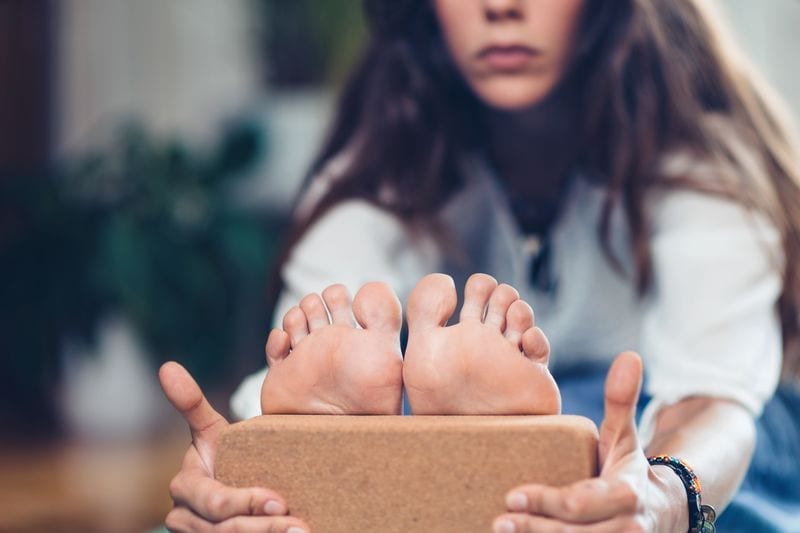Of all the differences between men and women, feet probably aren’t the first to come to mind. But women’s feet are different from men’s feet in a number of ways. And because of that, there are lots of foot issues that affect women more than men. Feet
Because of the anatomical differences between women and men’s feet, there are a number of foot issues that women are more likely to suffer from. These include bunions, corns and calluses, hammer toes, Morton’s neuroma, conditions resulting from wearing high heels, runner’s knee, and stress fractures.
What you need to know Feet
Bunions
Bunions are one of the most common foot issues. A bunion is a bony protrusion that develops along the outside of the big toe. The bone and tissue surrounding the joint (metatarsophalangeal, MTP) becomes misaligned due to undue pressure on the toes.
The main cause of bunions are improper bio-mechanics. If the foot puts too much stress on the MTP joint, bunions can form. People with flat feet and low or fallen arches are more susceptible to developing the condition. Other causes include: Feet
- Foot Injuries
- Arthritis and Inflammatory joint disease
- Overuse of high heels
- Undue occupational stress on the feet
While ice, over-the-counter anti-inflammatory medications, and bunion pads can help alleviate pain, once a bunion forms, only surgery will truly fix the problem. That is why it is important to take care of your feet before bunions form. Because biomechanical problems cause bunions, it is important to fix any irregularity in your stride. Insoles with superior arch support are key. Reduce the time spent in high heels and choose shoes with roomy toe boxes.
Corns and Calluses
Corns and calluses are thickened areas of skin that develop on areas of the foot. They are caused by friction between your foot and your shoes. Calluses form on the skin of the bottom of the foot. Corns appear on the top or the side of the toes. There are three main causes of corns and calluses:
Ill-fitting shoes – Tight shoes can cause “hotspots” or specific areas where your foot rubs against your shoes. High heels are a main culprit.
Foot deformities like hammer toes – The abnormal bending of the toe joint can create shoe fitting issues.
Overpronation – Overpronation causes arches to flatten and elongate. As this happens the ball of the foot moves forward and back, rubbing on the inside of the shoe or sandal. This rubbing often causes calluses.
To prevent foot issues like corns and calluses, make sure you: Feet
- Have shoes that fit
- Wear arch-supporting insoles to limit pronation and to assure proper alignment
- Reduce the amount of time spent in high heels
Wearing High Heels Feet
Many professional women struggle to balance comfort and fashion in their shoe choices. Conditions caused by high heels consistently rates as one of the most common foot pain problems for women. Feet
High heels can cause: Feet
- Tight calf muscles
- Toe problems like hammer toe
- Ankle instability
- Morton’s Neuroma
- Bunions
There are ways to wear high heels and avoid the most common foot pain conditions: Feet
- Wear heels in moderation. Use sneakers during your commute. Don’t wear heels on your days off. Alternate heels with flats.
- Choose comfortable heels. Wear 2-inch heels or lower. Find heels with wide toe boxes. Re-sole the heels with thicker rubber to provide extra comfort and reduce slippage.
- Avoid certain styles. Very high heels (stilettos) can cause pain in the ball of the foot. Pointy-toed heels will cramp the toes.
Ballet flats are also an option for women’s professional wardrobe. Flats distribute weight more evenly over the entire foot, but their lack of support can lead to other problems, including overpronation. The best way to provide extra structure in ballet flats to help prevent foot issues is by using arch support insoles.
Hammer Toes Feet
Hammer toe is an unsightly and painful condition in which the toe bends abnormally at the first joint and ends up looking like an upside-down V. The condition most often occurs in your second to fifth toes. Hammer toe is more common in women than men. High heels and shoes with tight toe boxes can cause the condition. Feet
Poor shoe choice is aggravated by underlying bio-mechanical irregularities including: Feet
- Flat feet – As your arch over flattens, your toes are forced to stabilize the foot. This causes increased pressure on the toe joints.
- High arches – People with high arches often have imbalances in the different tendons in the toes, which can result in hammer toes.
- Bunions – Bunions will push your big toe towards the little ones. This can put undue stress on the smaller toe joints. Feet
It is important to wear comfortable shoes with wide toe boxes. Supportive insoles can also help take the pressure off your hammer toe. Feet
Morton’s Neuroma Feet
Morton’s Neuroma is an inflamed or enlarged nerve in the metatarsals (toes). It is more common among women than men. This is mainly due to overuse of high heels and tight shoes. It is important to choose proper footwear to prevent the condition. Symptoms include pain, tingling, and swelling in the toes and ball of the foot. It can often feel like you have a pebble stuck in your shoe. Feet
The main causes of Morton’s Neuroma include: Feet
- Bio-mechanical problems like high arches and flat feet. Overpronation can also cause the metatarsals to rotate excessively, pinching the nerves.
- Trauma to the toe nerves.
- Improper footwear. Shoes that are too tight will squeeze the toes together. High heels over two inches will increase the pressure on the front of the foot.
- Repeated stress on the feet.
Pregnancy Feet
During pregnancy, women’s feet change. Most often, women’s arches will flatten, particularly during the first pregnancy, and they will often go up a shoe size. Feet
There are 2 main reasons women’s feet change during pregnancy: Feet
- Putting on weight during pregnancy is inevitable. However, weight gain, and shifts in how women carry their weight can flatten the arches and cause feet to swell. Feet
- Estrogen and relaxin are produced during pregnancy to relax the joints and pelvis to accommodate childbirth. But these hormones will also loosen the ligaments in the foot, causing the arches to flatten and shoe size to increase. Feet
While foot issues may be inevitable during pregnancy, there are specific ways pregnant women can take care of their feet: Feet
- Maintain a healthy weight. Work with a physician or midwife to follow a healthy lifestyle while pregnant.
- Choose the right shoes. Avoid high heels. Pick shoes that provide both comfort and support.
- Take care of your feet. Rest with your feet elevated on a pillow. Ice your feet. Perform foot exercises to increase circulation.
Treatment Feet
If your foot hurts and you need fast relief, consult with a medical professional. Pain is almost always a clear signal that something isn’t right with your body. In regard to any cosmetic changes or surgical alterations to the foot, consult with a foot and ankle specialist to discuss procedures and future treatment options.
To learn more, click here.






